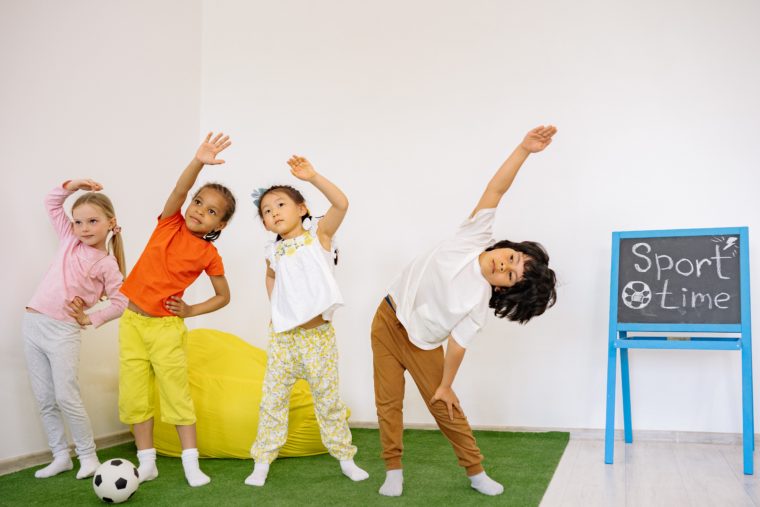Your children learn best when they are active and moving. When they move, their brain grows and makes new connections. When movement stops, learning stops.

Perhaps you’ve seen a child who picks a fight with other children for no apparent reason. Or the child who sits on a chair and immediately falls onto the floor.
These children are seeking sensory input. They are looking for the movement their brains need to learn.
A team of researchers from Loughborough University tested some students. They found that a lot of the students had lower than desirable levels of physical development. And almost 30% of them had symptoms that are usually associated with dyslexia, dyspraxia, and ADHD.
The following year, they conducted a year-long study with two schools. They implemented a daily movement program. The activities included throwing, catching, balancing, drawing large letters in the air, articulating sounds, and skipping.
When the students were tested at the end of that academic year, not only did their throwing and catching, balance, and manual dexterity improve. So did their overall levels of physical development improve.
Based on recent global changes, children are sitting more and moving less. This means they are not developing the physical skills needed for learning.
The best way to help your struggling children is with a multisensory approach. This engages all their senses and incorporates movement and hands-on activities.
Here are 5 suggested touch and movement techniques from Alta & Yvonne Graham:
- Air writing of letters and words
- Touch writing in sand, rice, salt, etc.
- Walking the shapes of letters of words
- Learning spelling words or math facts to the rhythm of jump ropes
- Using long colorful scarves for various movement activities, as the Waldorf schools do
Remember to incorporate brain breaks before, during, and after homework assignments.
These brain breaks will help your children enjoy learning.
What other touch or movement activity can you suggest?

Please note: I reserve the right to delete comments that are offensive or off-topic.